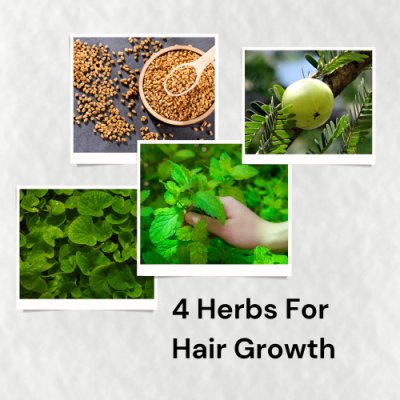Hair growth:
Every day, someone loses some hair; It is a normal part of the body’s lifecycle growth and repair. But when we lose too much hair or our hair does not grow back, the problem starts. The most well-known justification for this can be an unequal eating regimen. Because iron and protein are essential nutrients for a healthy scalp, eating a meal low in these nutrients can inhibit hair growth. Another explanation could be imbalanced doshas, for the most part, Pitta. Our hair follicles can become overheated when our Pitta gets aggravated, resulting in hair that is weak and brittle and takes longer to regenerate.
There are numerous ways of tackling these issues. Healthy and Strong hair get ensured by incorporating the following Ayurvedic herbs for hair loss and regrowth into your routine.
Fenugreek
One of the best Ayurvedic treatments for hair loss and regrowth is fenugreek, or methi seeds. They are wealthy in potassium, calcium, folic corrosive, nicotinic corrosive, and L-ascorbic acid, An, and K. They likewise have cell reinforcements and mitigating properties that help the scalp cool down and feed the hair all the more real.
Fenugreek gets included in your diet by being added to curries, dals, and sabzis. You can also use it to make a natural hair mask at home. Soak some fenugreek seeds overnight and make a paste and blend it in with some curd. For healthy hair growth, apply this mixture to your hair at least 30 minutes before you wash it.
Amla
Plentiful in L-ascorbic acid, amla (Indian Gooseberry) is one more Ayurvedic spice for hair development that diminishes pressure, filters the blood, and reestablishes the regular shade of the hair, forestalling untimely dim strands. Consuming amla supplements strengthens hair from within. Drinking fresh amla juice first thing in the morning has a lot of health benefits. You can also make a hair tonic by mixing amla juice with freshly squeezed lemon juice and applying it to the scalp. Amla oil, can also stimulate hair growth on the scalp.
Brahmi
Since the Vedic era, Brahmi gets regarded as a beneficial Ayurvedic herb for promoting hair growth. Brahmi’s alkaloids bind to hair proteins, resulting in thicker and stronger hair follicles. It improves your hair’s beauty, reducing flakiness, itchiness, and dryness.
Brahmi gets used at home in the form of oil. Leave it on overnight and massage it into your scalp. Leaves can be consumed straight or added to a variety of salads. It can also be ground and combined with other powdered ayurvedic herbs for hair growth, such as amla, reetha, and shikakai, to make a paste for a hair mask with water or coconut oil. After applying the mask, wait one hour before thoroughly washing. Utilizing Brahmi on your hair decreases the chance of split ends and makes your hair brilliant.
Pudina
Antimicrobial and antifungal properties of pudina leaves can treat multiple scalp conditions, particularly dandruff. It stops the growth of harmful bacteria or infections on the scalp. The concentrate of pudina leaves is an incredible source of carotene and cell reinforcements that advance hair development and forestall hair fall. It can treat other scalp problems and prevent dandruff and lice. You can also include pudina in your diet. Make a chutney/add it to nimbu paani or khus sherbet and have it with your feasts. Crush some mint leaves and add lemon juice to a paste to make a quick hair mask. Apply it on your scalp for around 20 minutes and wash off.
All these herbs for hair growth and healthy scalp are effective, but combine them with other options like scalp massages and natural hair care products. If you are shedding more than 50-100 strands daily, contact our Ayurvedic specialists on call or visit your closest Ayurcentral clinic. They will give you a personalized ayurvedic treatment that will help you stay healthy for a long time and address the problem at its source.




